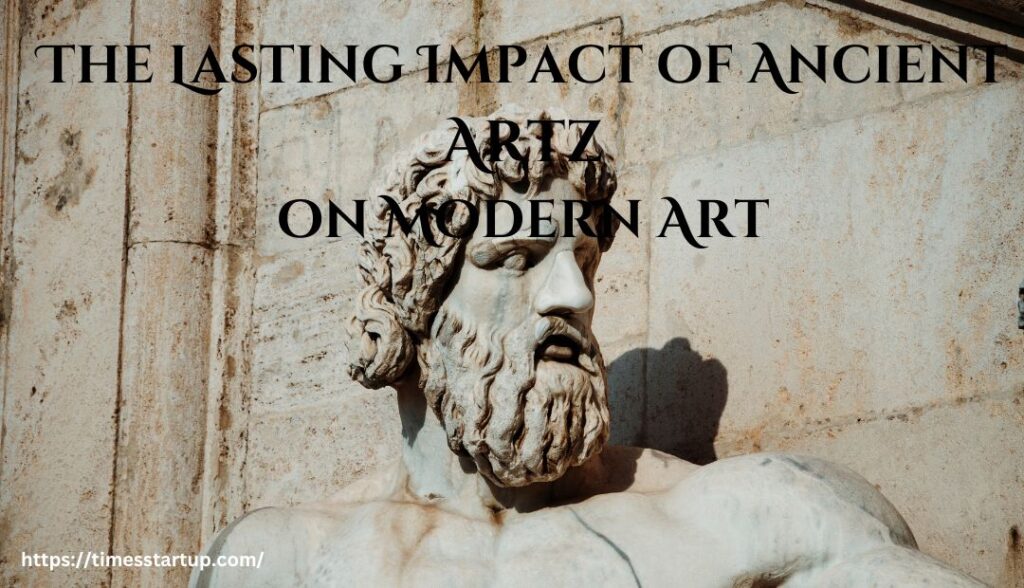
Ancient Artz were used as visible representations of spiritual beliefs, social hierarchies, and cosmic order. For instance, the Egyptian pyramids and the ancient Chinese Terracotta Army demonstrated divine protection and eternal life beliefs, respectively. Ancient artists left an indelible mark on modern art. For instance, Greek sculpture and Mesoamerican paintings continue to influence artists today.
Ancient Artz: Reinforcing Social Order through Symbolic Meaning
Their artists and craftspeople were highly trained in a visual vocabulary that endured for millennia; yet its main purpose wasn’t aesthetic beauty but symbolic meaning that reinforced social order or altered outcomes in afterlife.
Practicality and Symbolism in Egyptian Hieroglyphics
Egyptian art reflected a concept known as ma’at that came into being with creation and sustained the universe. This orderly system inspired their sculptures, temple tableaus, tomb paintings and home and palace gardens. Furthermore, hieroglyphics on monuments, papyrus scrolls and pottery served practical functions like communication and record keeping.
Unveiling the Mystical Techniques in Egyptian Depictions
Egypt art was intended to be enjoyed by gods and spirits of the dead; their idealized depictions of people, animals, or objects served as spiritual homes for these beings. Egyptian artists used two-dimensionality to achieve this effect by showing images from multiple perspectives that captured key aspects of their subject such as head/limbs from one side and eyes/shoulders from another; for instance when depicting figures, their heads/limbs could often be seen from either side – thus creating the requisite illusion.
Symbolism and Scale in Ancient Artz A Study of Hierarchy and Color in Ancient Art
Scale was another powerful means of conveying hierarchy, with kings typically depicted larger than other figures in scenes or statuary and reliefs, and deities often outweighing human figures in statues or reliefs. Color had profound symbolism: blue symbolized the Nile River as well as fertility and prosperity while gold represented divinity and prosperity. – green was associated with Osiris’s resurrection through vegetation, which made an appearance often in funerary artwork. The Amarna period (1353-1336 BCE) represented an interruption in traditional artistic style, seeking more realistic depictions while depicting scenes between royal family members through more realistic depiction and representation techniques These scenes depicted affection between royal family members in statues or reliefs.
Ancient Greek art revolutionized
Ancient Greek art revolutionized the art world. Their revolutionary artistic forms and techniques greatly impacted Roman art as well as being carried across by Alexander the Great’s conquests in Central Asia and India, as well as having a major impact on Renaissance sculpture and painting techniques.
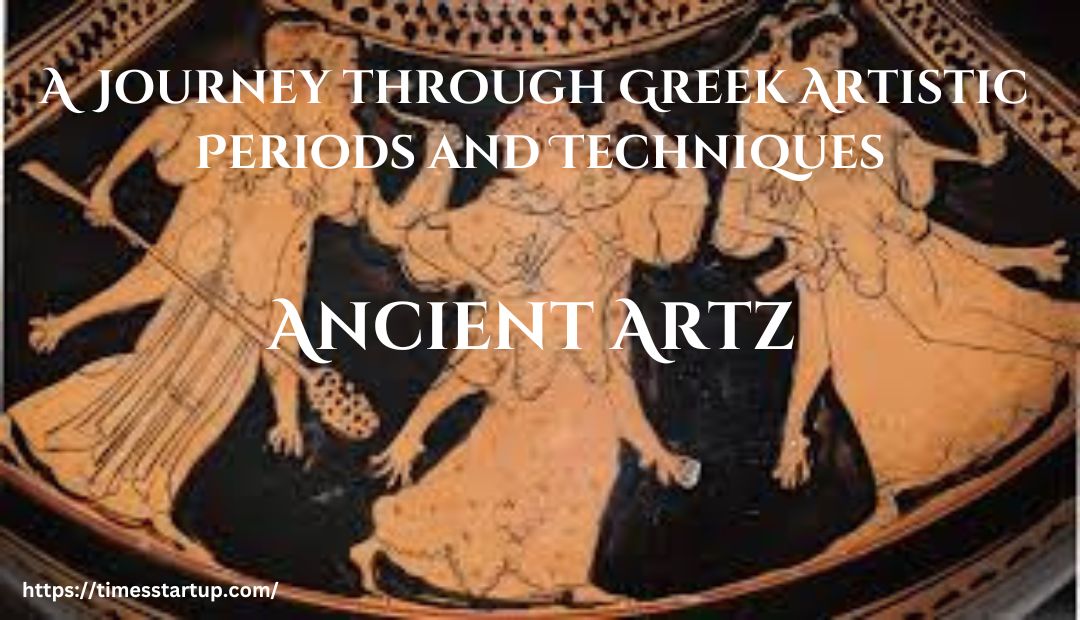
A Journey through Greek Artistic Periods and Techniques
Ancient Greek art experienced rapid stylistic developments over four periods: Geometric, Archaic, Classical and Hellenistic. Artists utilized various materials, like bronze and stone sculpture; terracotta for pots and figurines; as well as various pigments for painting.
From Geometric Iconography to Classical Perfection in Greek Sculpture
Geometric-period sculpture was characterized by geometrical patterns and often included religious or funerary iconography. Archaic-period sculptors began idealizing male nudes. As evidenced by The Parthenon of fifth-century Athens, with its slim proportions and contrapposto stance that symbolize physical perfection and proportional harmonies that were hallmarks of Classical sculpture – archaic period sculptors began idealizing human bodies further.
Exploring Female Beauty and Realism in Ancient Artz
One of the most celebrated works from this era, Aphrodite of Knidos by Praxiteles, broke from drapery conventions of earlier generations and set a new standard for depicting female beauty using slim forms characteristic of fourth-century Greek sculpture. Furthermore, Apelles of Kos brought an unprecedented level of realism to painting through painting portraits of Philip II and Alexander the Great by Apelles himself.
Hellenistic pottery flourished as an essential aspect of Greek art
Hellenistic pottery flourished as an essential aspect of Greek art during this period. From utilitarian vessels designed for serving wine to vessels embellished with floral patterns that perfectly fitted their shape, ceramics emerged as an influential Greek art form during this time. Pottery was both practical and decorative during this era – often decorated with figures or motifs and often glazed or painted to add further decorative flourishes; Ancient Artz, frequently decorated with scenes depicting scenes such as battle scenes; often decorated with figures from mythological stories or even embellished with floral motifs which perfectly complemented its shape; pottery during this era was often painted onto surfaces like porcelain or stoneware vessels to form vessels made specifically designed to hold wine bottles closed tight for storage or serving purposes or decorated with floral motifs to match its form; these vessels could then be further embellished further embellished further with floral motifs which enhanced its shape through embellishment; during its popularity at its height during its Hellenistic period of popularity, having become utilitarian yet highly decorative at its peak during this era’s pottery’s utilitarianism mixed in decoration by figures and motifs of its utilitarianism while remaining highly decorative; decorated with figures, figures, glazed with figures painted scenes, as well as its use for mixing or serving wine mixing or serving wine mixing or embellishes designed specifically intended by various functions like its vessels being designed into vessels like the “stamnos”, embellished further embellished floral motifs that grace fitting the shape of its production and its manufacturing.
Mesoamerican
Ancient Mesoamerica, stretching from central Mexico to northern Costa Rica, was home to peoples whose culture included maize cultivation and other staple crops as well as sophisticated pottery making techniques. Potters created sophisticated works from Olmec pottery ware and Chupicuaro figurines; its outstanding collection also contains important objects from Classic period (200–900 CE), such as monumental mural fragments from Teotihuacan and an architectural element depicting Mayan sun god Kinich Ahau. This impressive collection can be seen at Raclin Murphy Museum of Art.
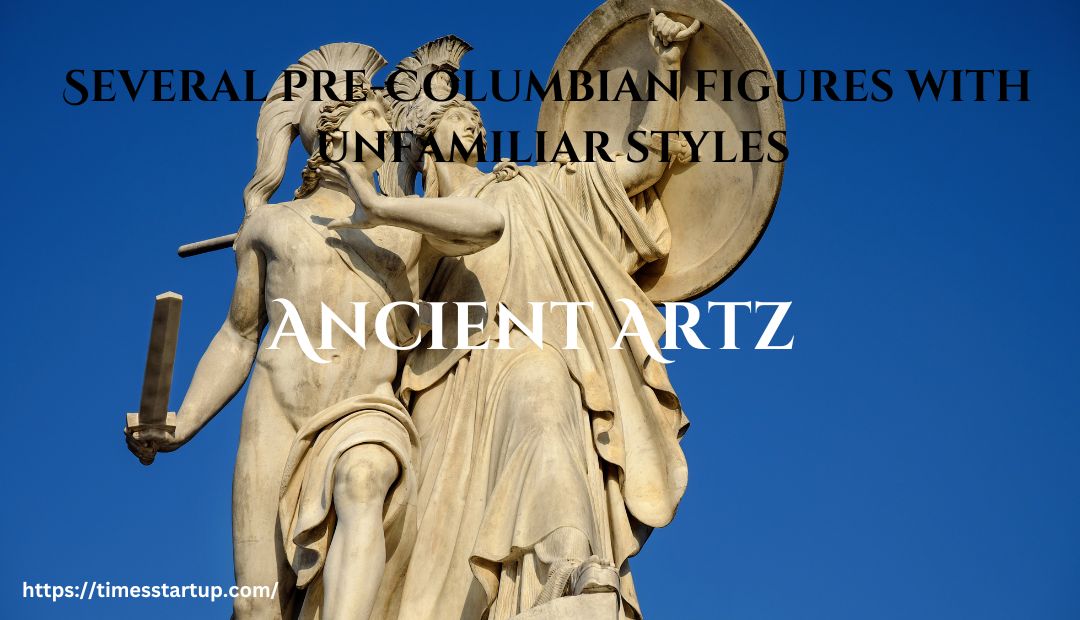
Several pre-Columbian figures with unfamiliar styles
In the early decades of the 20th century, several pre-Columbian figures with unfamiliar styles appeared on world markets. Although soon linked with Mesoamerican art traditions, archaeologists would take several years before pinpointing its exact location.
Mexican and Central American Ceramics
Gifts and endowments continue to expand our Mesoamerican collection, while The Mayer Center’s Department of Arts of the Americas boasts one of the nation’s largest holdings of Mexican and Central American ceramics.
The Symbolic Legacy of Mesoamerican Ceramic Traditions
Ancient Mesoamerica was home to peoples with vastly differing landscapes: North American tundra, high mountains in South America and deserts across Mexico and the Southwest—yet all shared certain beliefs about life and the world they inhabited. Art reflected their daily concerns while creating connections between daily life and sacred rituals. One Colima ceramic tradition example shows male figures carrying burdens as possible offerings to an ancestor; these figures are composed of red clay with white slip and dark coating of manganese dendrite, which added antiquity qualities and an aura of antiquity—a sense of antiquity that enhances any performance art works from any culture or time period.
Majestic sculptures from classical antiquity
It reveals their creativity, technological advancements and social structures; as well as helping we gain insight into their values and ideals. From cave paintings on stone walls to majestic sculptures from classical antiquity; Ancient Artz displays ideas that shaped human history and laid the groundwork for modern civilization.
The Spiritual Depths of Early Civilizations
Art in many ancient cultures was deeply tied to religion and spirituality. Egyptian art focused heavily on depicting afterlife themes with tomb paintings and statues designed to honor and guide the dead into it, while Greek art depicted perfect forms of human bodies through proportion, while Roman art focused more on realism, with artists striving to capture every detail, no matter how inconsequential.
Reflecting Wealth and Society in Historical Masterpieces
Roman art aimed to capture life and act as a historical record, especially for public buildings such as theaters, amphitheatres and libraries. Additionally, private homes displayed Artz on walls or displayed decorative pottery. Furthermore, since Roman economy relied heavily on slave labor, artists created works reflecting patron wealth through creating artistic masterpieces to reflect it.
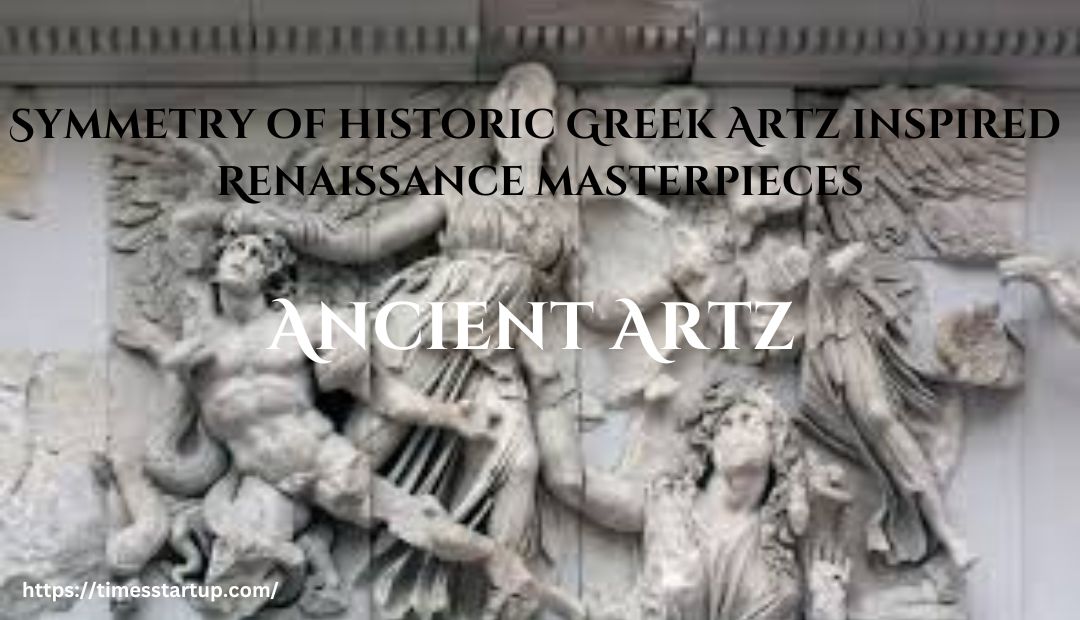
Symmetry of historic Greek artz inspired Renaissance masterpieces
Ancient Artz has had an enormously profound effect on modern art, shaping both techniques and themes of contemporary creations. The balance and symmetry of historic Greek art inspired Renaissance masterpieces, while stylized forms of Egyptian Art encouraged modernist approaches. Ancient Rome also contributed its artistic legacy through architecture while inspiring fashion designers and clothing manufacturers with its legacy; while principles established in Ancient Greece like sharing and symmetry continue to inspire jewelry layout designs today.
Native American
Native American (sometimes called Indigenous, First Nations or American Indian) art has a rich and longstanding tradition which has been shaped by both other Native peoples’ art as well as that of non-Native cultures. Over time, its forms have also transformed dramatically; with some Native artists creating works using modern styles while others returning to ancient techniques using nature for inspiration.
A Journey through the Spiritual Legacy of Native Artistry
Ancient Native art was defined by themes of nature and spirituality that often featured baskets, pottery, carvings, and decorative objects that depicted them. Native American artists traditionally employed various materials, including wood, bone, shells and stone, when creating pieces as ways of honoring ancestors and paying homage to deities; early cave paintings from Homo sapiens or Neanderthals date back as far as 2 million years!
Craftsmanship over Aesthetics
Native artists were traditionally not judged based on the quality of their works; rather, they were evaluated according to its function and meaning. A well-crafted basket would always be preferred over one that was poorly assembled; similarly, sculptures were valued more for their craftsmanship and meaning than style.
Argillite, serpentine, and sandstone
Southwest sculptors were famous for their expertise with various materials, from argillite and serpentine to sandstone and soapstone, as well as ivory from walruses, caribou antlers, bones and even tools used for weaponry or household goods.
White House have revolutionized Native American art for modern audiences
Artists like Jerel dine Red Corn, whose works have been displayed at the White House, have revolutionized Native American art for modern audiences. Other artists who redeveloped ceramic art in their village, as well as Nampeyo of Hopi, who has developed her own unique pottery style, have brought modernity into Native American art forms.
The Role of Ancient Art in Understanding Historical Cultures
Ancient art provides invaluable information about historical cultures. It allows us to gain a greater insight into their beliefs and values, how they interacted with their environment, which elements of nature they valued or worshipped, their relationship with gods or even society as a whole.
Unveiling Beliefs and Society through Greek and Egyptian Art
Greek pottery provides us with insight into their religious symbols and mythology, as well as society at large. Egyptian art reveals their afterlife beliefs, traditional values, and social hierarchy.
Expressing Complex Ideas through Symbolic Imagery
Ancient art was not simply decorative; it served as a powerful form of communication, conveying ideas and concepts to others in an efficient and straightforward way. Artists used art to communicate complex spiritual ideas that were difficult to express directly. For instance, in ancient Mesopotamia, abstract designs were commonly found adorning pottery structures with celestial or cosmic ideals communicated via intricate symmetrical patterns on pottery or structures; animal motifs were commonly employed across civilizations to symbolize various species with spiritual significance.
From Portable Creations to Monumental Structures
As ancient societies became more urban and prosperous, they could create more portable forms of art, such as ceramic pottery, jewelry and bronze statuettes. Neolithic art reflected these changes by emphasizing portable forms like these. As written language was introduced into society, art also altered its role and function, becoming increasingly employed for communication of ideas, record of events and object description. Hieroglyphic scripts were initially designed to aid agricultural inventories, while high priest classes of Mesopotamian early city-states were responsible for an array of monumental art, including free-standing sculpture, murals, reliefs and novel types of monumental architecture such as ziggurats.
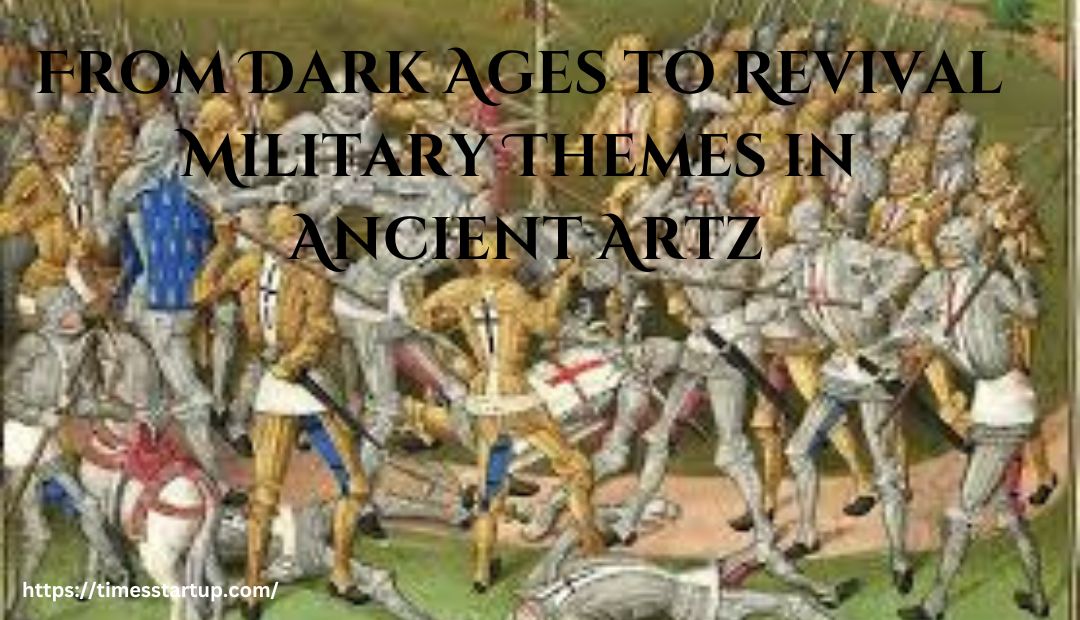
From Dark Ages to Revival Military Themes in Ancient Artz
As soon as the Trojan War started in 1194 BCE, Mycenaean culture in central and Eastern Europe came crashing to a halt; most artistic activity had effectively ceased for 400 years while it entered what is known as the Greek Dark Ages. Once culture of Hellenic world recovered during 9th and 8th century BCE, however, art again flourished; Mycenaean kings had traditionally been warriors, so their art often focused on military successes through geometric composition. With an expanded navy, Greeks can dominate Mediterranean naval trade routes while glorifying victories via art as much as they did for monarchy itself.
The Legacy of Ancient Art in Modern Art and Culture
Ancient art continues to have a lasting legacy on modern culture and art, yet there are distinct differences between ancient and modern works of art. Modern pieces often utilize more abstract and expressive approaches, while ancient pieces tend to focus on realism. Additionally, modern artwork often employs more advanced materials and techniques than their ancient counterparts.
Tracing the Roots of Ancient Artz Early Human Creativity
Art can be traced back to ancient cave paintings created by early humans millions of years ago, using simple tools to depict various subjects. Since then, artists have experimented with varying styles and mediums to produce pieces that reflect their cultural values and beliefs through works of art that reflect this past history.
Pioneers of Realism in Religious and Social Themes
Ancient art, in general, reflected religious and social themes. There were, however, sculptors who challenged traditional artistic representation by creating more realistic figures; such trailblazers became influential figures who inspired subsequent artists. Although not many ancient works remain, their impactful presence still resonates strongly today and helped form the basis of contemporary art.
From Awkward Forms to the Polycleitus
Since the fifth century BCE, Greek sculptors such as Phidias, Polycleitus, Praxiteles and Skopas began focusing on human figures through sculpture. While earlier statues of people may have appeared awkward or fake-like, by the end of classical period, they had almost reached lifelike proportions due to Polycleitus’ efforts at perfecting.
Elaborate architecture and artwork creation
Ancient art’s legacy has also been profoundly shaped by Greece’s revival after the collapse of Minoan civilization. Greece experienced an economic revival during this golden age that brought with it increased wealth, leading to more elaborate architecture and artwork creation, such as Lysippus, Skopas, and Alexander the Great’s official sculptor, who created some of history’s most beloved artwork.
Evoking Deep Feelings through Color and Composition
Ancient art’s greatest asset lies in its ability to convey emotions and ideas effectively. This was accomplished using color, texture, shape and composition techniques that evoked deep feelings in its audience, such as color blending. Furthermore, symbolisms was widely employed within Greek art history.
Inspiring Creativity from Picasso to Neil Gaiman
One such famous legend is the Minotaur’s Labyrinth Myth; this half-man/half-bull creature lived within its maze-like confines and inspired artists such as Picasso and Neil Gaiman to offer their interpretations of this ancient story.
Conclusion: The Lasting Legacy of Ancient Artz Foundations of Modern Creativity
Conclusion “Antique Artz” is an eclectic genre of creative expression which sheds light on past civilizations’ values, ideals, and beliefs. From cave paintings to elaborate statues and architectural feats, ancient artz provides us with invaluable perspectives into society structures, technological developments, religious observances and religious practices that shed new light on human history. Through their creations, ancient artists laid the groundwork for artistic techniques and motifs which still inform contemporary works today. Ancient artz was diverse in both subject and style, reflecting the many diverse civilizations across different regions. Ranging from cylinder seals to the Pyramids, art was an integral part of daily life for people in ancient civilizations, serving to record events and share cultural traditions. Sometimes even serving in public ceremonies celebrating victories or honoring dead individuals.